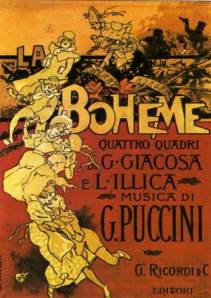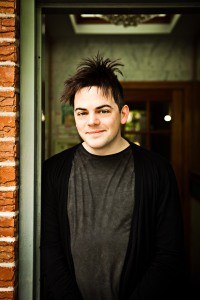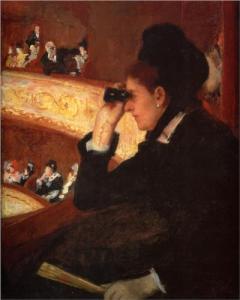The Future of Opera, a Conversation with Christopher Hahn
by Andrew Swensen
We often talk about the arts collectively, but imagination and aesthetic intent translate into many forms. Their differences lead to widely varying functional challenges beyond artistic excellence. Some arts require only an individual, some a collaboration of many. Some arts have modest capital needs – a pen and piece of paper for the poet, some grease paint for the mime – while others require stage, sets, lights…and all the personnel to manage them. Among art forms, opera can often be one of the most logistically complex.
 Some arts have thrived in the commercial market – Broadway musicals, film, even some of what shows up in Las Vegas. However, most performing arts come into the world through nonprofit organizations. In a recent article on how long an art form will endure, I shared Brett Crawford’s concise response: “For as long as the market bears it.” The “market” in the case of the performing arts is really two markets, of earned and contributed revenue: the market for audience (ticket sales, and sometimes education programs), and the market for philanthropy (government and foundation grants, corporate sponsorships, individual giving). Ratios of earned and contributed revenues vary widely among organizations for good reasons. As President of the Kennedy Center Michael Kaiser has written, there is not a “right” ratio of earned and contributed revenue but rather they differ by the nature of the art form and by an organization’s mission, and the point for the moment is that the arts are sensitive to changes in both quarters.
Some arts have thrived in the commercial market – Broadway musicals, film, even some of what shows up in Las Vegas. However, most performing arts come into the world through nonprofit organizations. In a recent article on how long an art form will endure, I shared Brett Crawford’s concise response: “For as long as the market bears it.” The “market” in the case of the performing arts is really two markets, of earned and contributed revenue: the market for audience (ticket sales, and sometimes education programs), and the market for philanthropy (government and foundation grants, corporate sponsorships, individual giving). Ratios of earned and contributed revenues vary widely among organizations for good reasons. As President of the Kennedy Center Michael Kaiser has written, there is not a “right” ratio of earned and contributed revenue but rather they differ by the nature of the art form and by an organization’s mission, and the point for the moment is that the arts are sensitive to changes in both quarters.
Before you grow weary of this primer on nonprofit financing, let’s get to the interesting part: how all of this affects opera and its future.
Opera is an expensive art form, relatively speaking. The “real” cost of a ticket – dividing the cost of production by the number of attendees – is a lot more than what operas actually charge, and contributions make up the difference, allowing the art form to continue. So opera faces some difficult challenges as it looks to the future. Most of these challenges are present across the arts, but because of its complexity, opera may be particularly sensitive to them. It must survive when markets dip as in 2008. Government and foundation grants decline with them, and so too does the value of endowments and asset reserves. Combine these economic considerations with aesthetic and sociological ones: How do older art forms stay relevant with the times, while also honoring historic masters? How do they preserve core audiences and also attract new audiences who have very different buying habits and aesthetic sensibilities?
I put these questions to Christopher Hahn, General Director of the Pittsburgh Opera. I began with the historical-aesthetic one, and asked how he thought opera, symphonic music and ballet are going to survive.
He offered a first observation that shows an intriguing place (I promised that this would get interesting) where nonprofit administration intersects with artistry. While opera is “exponentially more expensive to produce,” it has an agility in programming, which can impact the ability for the art to endure. A small number of opera companies in the largest markets do have full-time orchestras and year-round commitments to large venues. Yet for most companies, opera looks more like theater in this regard: they hire performers for a specific production, and each production has diverse needs both in terms of personnel and infrastructure. The situation provides opera with a flexibility that we are likely to see more and more. Opera can play in large and small venues, with grand and austere sets, and with large and small casts of singers and musicians. “We can perform a work with 10 musicians and a stream of light. It is still opera,” says Hahn. Symphonies, by contrast, differ from other performing arts because of a trend through the twentieth century to have a group of musicians employed year-round. In order to support their status as full-time employees, symphonies programmed throughout the year, negotiated collective bargaining agreements that included substantial pension obligations, and bound themselves to large venues. “As soon as that happened,” Hahn observes, “then you had subscription requirements. That’s a lot of performing, a lot of programming. And that is a lot of audience to put in the house. That is very different from opera.”
This line of thinking moves us to the next matter of how opera will evolve, both artistically and administratively in the years to come. It is certainly not fair to say that all opera will contract to minimalist productions, but rather that opera may be headed more toward programming in multiple scales. There will still be an audience for full-scale productions of core repertoire, of La Traviata again and again through the years. Yet companies and audiences may be trending toward smaller, non-traditional venues and innovative presentations. Hahn anticipates the growth of smaller companies, specialists who will produce some “startingly good work.” As for changing audiences, his ideal audience member is one committed to the artists and the form, not necessarily to specific works.

Nico Muhly (Photo: Matthew Murphy, from http://www.nicomuhly.com)
Indeed these audiences may cultivate the future of the art form, for contemporary composers are focused precisely on the willingness to see new possibilities. While an opera company, looking at hard financial times and uncertainty over earned income, may consider going with the “tried and true,” the time comes in the long run when you simply have to take risks, or you are never going to progress with the art and its presentation. Hahn speaks of the balance between “safer repertoire” and going out on a limb, and one must not be “pigeon-holed” and “constrained” by the familiar. His upcoming season reflects one articulation of that effort for balance, combining the mainstays Aida, The Magic Flute, and La Bohème with productions of Philip Glass’s Orphée, Nico Muhly’s Dark Sisters, and Gregory Spears’s Paul’s Case. Audiences may expect all modern composition to be atonal, but this is not that. Glass is familiar, but Orphée likely not; and despite recent recognition, Spears and Muhly are still not household names like Verdi and Puccini. So the risk is clear.
Muhly is an interesting case study of someone sensitive to both the historical tradition and the new possibilities of opera. In a recent article for Opera magazine, Kristin Cowdin writes, “Muhly does not easily register a division between the contemporary and the repertoire of years past.” Hahn labels him “the new wave of American composer” and Dark Sisters “the kind of contemporary composition that you want to present to audiences.” He continues by saying that it is “dense, an intriguing way of giving contemporary voice to a situation that we have all encountered. Opera meets square on that highly emotive moment.”
Hahn is ultimately optimistic as he considers the future of the art, and indeed I have to agree, albeit with some concerns. Opera has a difficult future, like so many of the performing arts, in striking the right balance of how we fairly support committed artists, provide compelling content to audiences without cutting aesthetic corners, and in the meantime balance budgets to perpetuate the art and its presentation to all communities. Failure, to me at least, would be to have the world of opera distill down to a few companies who are simulcast around the world. That has its time and place, but it is not the same as breathing the same air with those who yearn to make great art. As for Hahn, he concludes, “I get back to this basic conviction that human beings want to be together experiencing dramatic moments through song. It’s experiencing it live, with the potential for enormous failure and for enormous success, a hair’s breadth apart, right there in front of you.”
Well said.
Articles of Related Interest from The Muse Dialogue:
“Joseph Gaines, the Story of Opera and of an Artist” by Andrew Swensen. The next article in this series.
“‘That Was Not What I Was Expecting': To Get to Opera We Must First Get Past Ourselves” by Andrew Swensen. The first article in this series.
“A Question of Arts Survival” by Andrew Swensen
“Aesthetic Darwinism” by Andrew Swensen
“Classical Musician’s Paradigm Shift” by Annie Gordon










